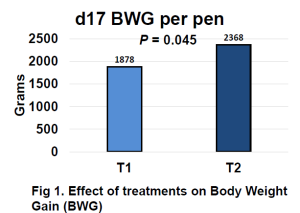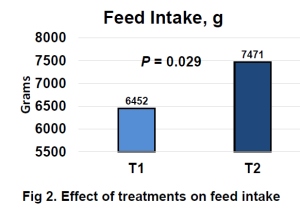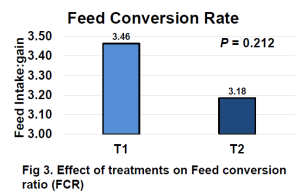Effect of breeder flock age and temperature during physiological zero on hatchability and performance parameters of broiler chickens
Mallory Landreth*, Oscar Tejeda1
1Faculty advisor
Physiological zero is a term that describes the embryonic state in which there is minimal cellular activity in the chicken embryo. This process is important to ensure that embryonic development does not happen before eggs are set in the incubator. Therefore, the objective of the experiment was to evaluate the effect of breeder flock age, and physiological zero temperature of on the post-hatch performance of broiler chickens. A total of 300 fertile eggs were collected from two breeder flocks (n = 150 per flock; 48 and 33 weeks of age). 50 fertile eggs of each flock were placed at 3 different temperatures: 63, 68, and 73 °F during 3 days and then placed in a single-stage incubator during 19 days before being moved to the hatcher. Egg hatchability was recorded on day 21 by counting the total number of chicks per treatment. Chicks were raised for 21 days. Body weight, feed disappearance and FCR were measured on days 7, 14, and 21. Statistical analyses were conducted using the general linear model of SPSS statistical software version 21. The highest hatchability was observed in eggs from older flocks exposed to a temperature of 63 °F (86% hatchability). Chick weight was heavier for eggs coming from older flocks (P < 0.01). No statistical differences were observed in the body weight among treatments. Chickens from eggs from younger flocks exposed to 68 °F and chickens from eggs from older flocks exposed to 63 °F had numerically heavier body weights compared with the rest of treatments (P > 0.05). Chickens from the young flock had a significantly heavier body weight on day 14 (P = 0.025). Flock age and temperature during physiological zero affect hatchability and post-hatch broiler performance.
Key words: broiler chicken, physiological zero, breeder, hatchability, growth performance
Graphs of data



Questions?
Contact Dr. Oscar Tejeda
